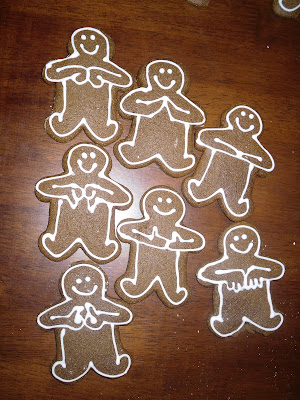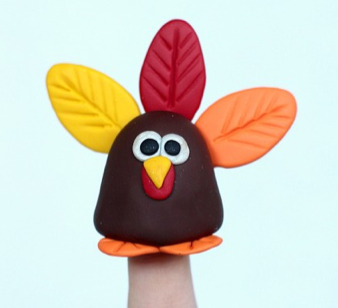We recently posted about the
history of solfeg and its usefulness in ear training. Today I'll share 7 more reasons Let's Play Music teachers use solfeg and LOVE IT!
1. There's a Word for That
Can you imagine teaching your
child to identify colors without having any color words? Not easy!
Similarly, as students learn to discern pitches and intervals
between pitches, using a system for putting a name to the pitches
(solmization) facilitates the process immensely. China, Japan, Korea,
India, and Indonesia all have solmization schemes for associating pitch
to a name. When talking about
fixed pitches, we use the alphabet (C is always C) and when talking about scales and relationships between notes in a scale, we use solfeg!
2. Whole-Body Involvement
Each of our young students (and even
many of our toddler Sound Beginnings students) master the hand signs
and use them to experience singing, ear-training, and note-reading
with their whole body.
As they hear the pitches moving up and down, their hands move up and
down through space accordingly. As they recognize intervals and
relationships between the notes, they can
feel the distance of jumps between pitches and
grasp
them with their hands.
Adding this
kinesthetic mode of learning
to an
auditory and visual skill heightens a child's absorption of the
information, accommodates various learning styles, and facilitates
integration and long-term learning. Solfeg is a popular tool for
University students majoring in music fields; it should be shared with
young children, too, who adore and quickly internalize having a physical
movement to put with their singing. You already knew wiggly, active
children enjoy having actions to accompany their favorite nursery songs,
right? If there's a way to make teaching more physical AND more fun
for them, let's do it!
3. Understanding Scales and Key Signatures
Would you love
to be able to quickly and easily sing every major scale? You can do it
today! You don't have to memorize the notes of every single scale, just
memorize the 7 solfeg syllables and start singing on whichever pitch you wish to
be DO. That's part of the power of the
moveable DO (read more here):
the relationships within each scale will remain the same.
'Do' corresponds with
the tonic of whatever key a particular composition or melody is placed.
Thus in the Key of C major,
C is Do, and in the Key of F major,
F is Do.
You can see those two scales already engraved on your Let's Play Music
tone bells! Truly, any bell or piano key could be Do. Of course you'd
have to add some black keys to your scale to get it to sound like a
major scale, but now after a few months of Let's Play Music training,
your child could pick out (by ear) which black keys were needed.
Do is the note that the music rotates around and pivots back to. Whatever key we sing in,
Do really is home! Most songs end by bringing the melody back to Do.
4. Intervals
I recently wrote about the powerful ways that
mastering intervals will help you improve musicianship in your reading, singing, and composing music.
Solfeg
is a handy tool for students wishing to master interval training. The
goal is to instantaneously recognize the precise intervals when heard,
and having solfeg words to identify them can be very helpful in this process. "The
notes I just heard sounded like...Do-Fa! It's a 4th!"
Here are just a few relationships I think my Let's Play Music students can hear and identify:
Do - Re : major 2nd
Do - Mi : major 3rd
Do - Fa: perfect 4th
Do - Sol: perfect 5th
Mi - Sol: minor 3rd : In class we sing this as Sol-Mi more often than as Mi-Sol, but they are the same interval of course.
5. Sight Reading Music
Choir class
is a very common place to find solfeg at work; students are
taught to rely on solfege for sight-singing melodies. Singers can
quickly read and sing the written melody if they interpret it in terms
of solfege because they have learned the relationships between each
solfege note and don't need to be retaught those relationships for
whatever key the music is written in.
Here are some videos of students performing 4-part vocal music they have never rehearsed, using solfeg syllables and hand signs.
At
the piano, sight-reading music in the same way and hearing it with our
inner voice helps us to self-correct as we play. Solfege allows us to
be able to play a tune in another key (transpose) by choosing a new DO
and
playing the same solfeg pattern (see an example here.) We will practice singing and transposing this way in Purple and Orange semesters!
6. Sharps, Flats and Minor Keys
Now that we know having a way to sing the
steps of a scale makes it easier to learn music, some folks have
wondered why we don't prefer to sing numbered steps (1,2,3,4,5,6,7)
instead of the solfeg syllables. The word 'seven' is already
less-than-popular because it is not a monosyllable, but all of the
numbers become problematic if we ever want to introduce sharps or
flats. 'Raised-seven' is definitely not an easy-to-sing monosyllable!
With solfeg, for a note that is lowered a half-step, we sing it with
an A sound (like in the word "nay") but spell it with an
e. Thus
mi becomes
me (may),
la becomes
le (lay),
ti becomes
te (tay), etc. This works for all scale steps except
re which is already an
e sound, so
re lowered a half-step become
ra (rah!).
For a note that is raised a half-step, we sing it with an
ee sound, but spell it with an
i. Thus,
fa becomes
fi. This works for all steps except
mi and
ti, but they are almost never raised anyway.
Here are the syllables for the chromatic scales (play every single key on your piano, both black and white, as you sing):
ascending: do di re ri mi fa fi sol si la li ti do
descending:
do ti te la le sol se fa mi me re ra do
In
Let's Play Music class, we won't spend much time teaching the raised
and lowered syllables, but it is a beautiful and simple system to grow
into as your child takes interest in further musical skills. Each year I
have one or two Orange students wanting to compose in minor keys, and I
do help them master me, le, and te so they can be sure to write an
appropriately minor melody.
7. Solfeg Works
The final, and
perhaps best, reason I want to share about why Let's Play Music teachers
love solfeg is simply that it works. Students wanting to become better
musicians (and get passing-grades in their college-level music classes)
find that having the right tools will get the job done. There's no
need to wait until college; solfeg can help your very young child
improve musicianship right now.
- Gina Weibel, MS
Let's Play Music Teacher
This post was originally posted at the Making Musicians Blog






















